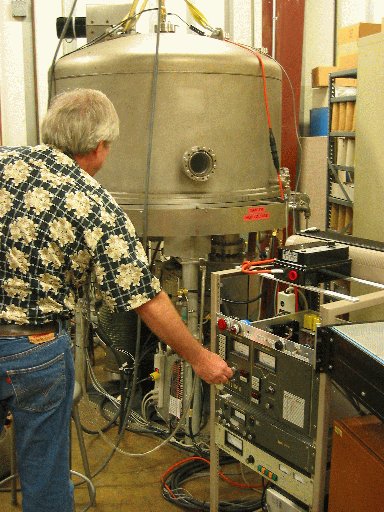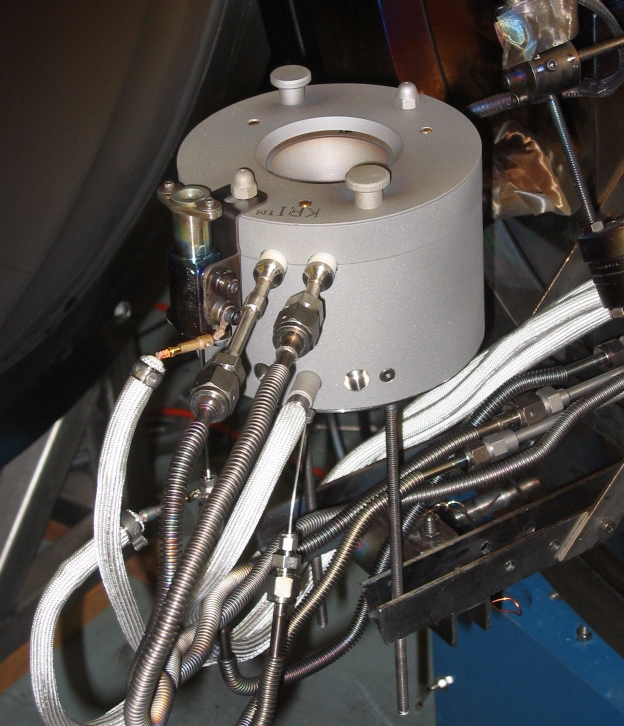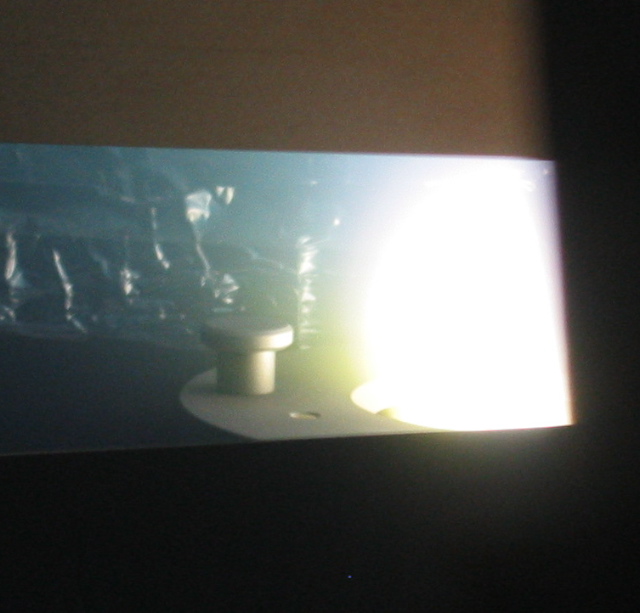
(Here, Ken Dietsch is doing some electronics testing on the e-gun.)
Click on pictures for larger versions.
More information and photos to follow!

|
The ion source in the K&R Test Chamber (Ft. Collins, CO) on April 1. |

|
Ion source producing 60 eV oxygen ions in the 48-inch chamber, April 21. |
These data were collected over the space of about 55 minutes. The unit had
been on for about 5 hours, so it should have been stable. One bare
quartz slide was placed in each of the sample and reference beams, in
transmission, a baseline taken, and then a regular transmission trace.
The heavy black line shows the result,
at 100% transmission as expected (a second thin solid black line shows a
repetition, hard to see as it falls under the heavy line). The sample
compartment was opened and the slide in the sample beam reversed. The colored
lines show the progression from 4:06 to 4:50 pm. Then the sample compartment
was opened and the sample slide reversed again, ie, restored to its original
orientation. The resulting trace is shown as the black dotted line. Except
for reversing the sample slide twice, the unit was not touched or changed
in any way. Three zones are present in the traces:
UPDATE (sort of):
The Varian Sales Rep presponded to this data by making a visit,
the first input from Varian since we notified them directly (rather than
through Service) in June 2006. During the visit, he observed the drift.
He stated this was clearly wrong. That was Oct.4. It is now Nov. 20. There has
been absolute silence from Varian in the interim.
Has the problem gone away? Check out this
baseline drift over 30 minutes. The blue curve was taken immediately after
a baseline, and the drift was monotonic.
The scan has the same parameters as the one above. Interestingly,
in this case both the IR and Vis are drifting, unlike the last figure.
A couple of days ago, we did some reflectance measurements, followed by a
straight-through base-line configuration. The step in the "100%" line was 1.5%
at 800 nm. Since we are trying to measure reflectance at the 0.1% level, we're
clearly being hobbled by this instrument. Varian has been told this repeatedly.
And, yes, we are under service contract with them.
UPDATE (Jan. 07): The unit was serviced in early Decemeber, and it
was found to be out of alignment. The step in transmission was reduced to
<= 0.1% in transmission. In reflectance, we are still seeing some apparent
drift, now on the IR side, leading to steps up to 0.3%. This has not been
well-characterized, though, and may be the standard "noise" in the reflectance
mode. In general, the unit appears usuable again.
Andrew C. Phillips / Lick Observatory
Varian Cary 5000 Spectrophometer
The following figure is intended to help debug problems with our unit, which
have plagued us for the past 1-2 years (click on image for PDF):
Last modified: 20jan2007